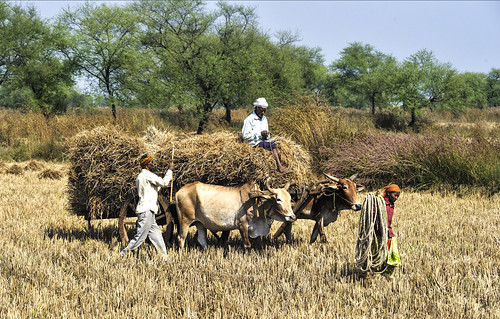
Farmers on the job, at Pacheda Village, Raipur Chhattisgarh. (ADB Photo Rakesh Sahai, via Flickr Creative Commons)
APBI 360 uses a systems approach to investigate the functions and interactions of plants and animals in select agricultural ecosystems. Students will develop an appreciation of how animals can contribute and/or impact on sustainable food production systems. Throughout this course, students will have opportunities to apply principles of agroecology/sustainability from APBI 260/265 or those introduced in class when we discuss the basic design, analysis and management of agroecosystems. Animals in agroecosystems add a new dimension of complexity into any agroecosystem and students will be challenged to further develop their
problem-solving skills in this area.
The concepts explored and integrated into this course will be based on BC examples but are of global significance for sustainable agriculture and community development. Abiotic factors will be examined in utilizing a systems approach; however, some emphasis will
be on select crop and livestock species (rangeland plants, fruit & vegetable crops, sheep, cattle & poultry) and the design of certain systems for mixed food production. As both insects and wildlife have significant impacts on many food systems, short presentations/assignments by both the students and the instructor (guest speaker(s)) will be included. (Note: topics include insect population ecology relating to insect pests and their natural predators and also the impact of wildlife on food production and the impact
of food systems on wildlife).
Link to course syllabus: http://courses.landfood.ubc.ca/files/APBI_360.pdf
Poster: Food and Environment II 2014

 Follow
Follow